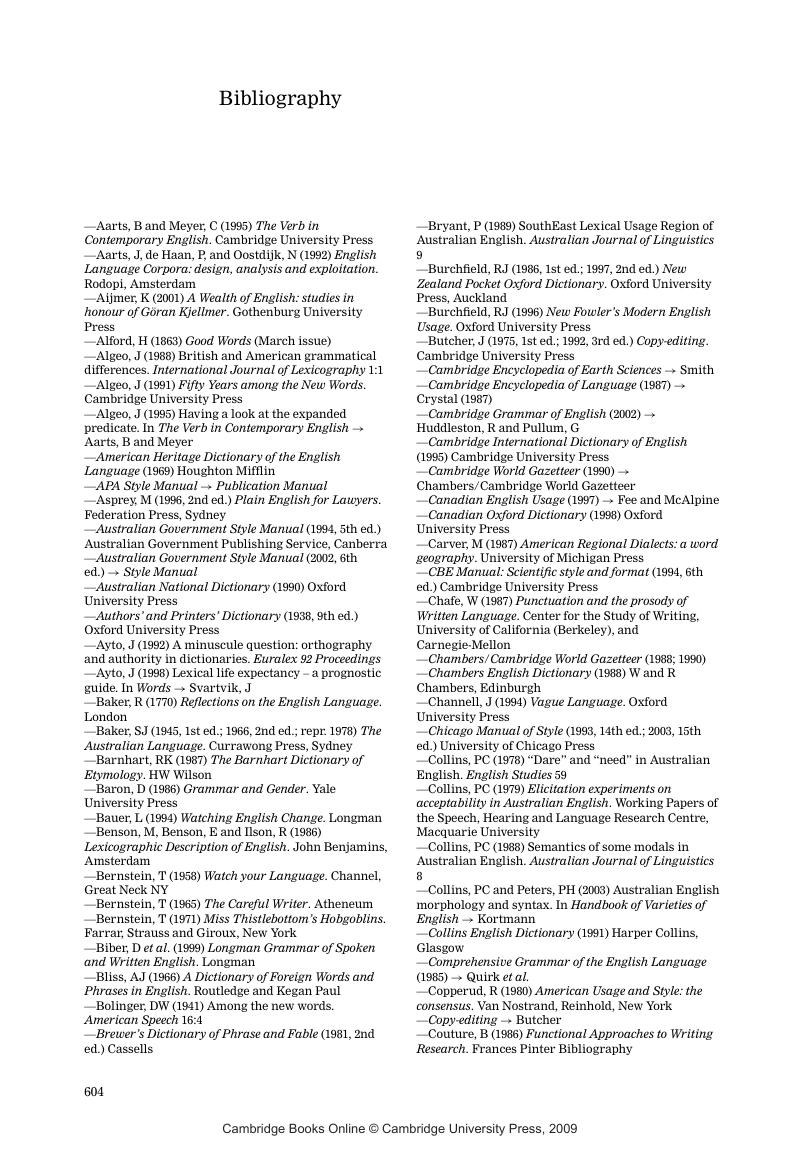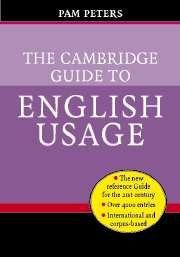Book contents
- Frontmatter
- Contents
- Preface
- Overview of Contents and How to Access Them
- A
- B
- C
- D
- E
- F
- G
- H
- I
- J
- K
- L
- M
- N
- O
- P
- Q
- R
- S
- T
- U
- V
- W
- X
- Y
- Z
- Appendix I International Phonetic Alphabet Symbols for English Sounds
- Appendix II Geological Eras
- Appendix III Perpetual Calendar 1901–2008
- Appendix IV International System of Units (SI Units)
- Appendix V Interconversion Tables for Metric and Imperial Measures
- Appendix VI Selected Proofreading Marks
- Appendix VII Formats and Styles for Letters, Memos and E-mail
- Appendix VIII Layout for Envelopes
- Appendix IX Currencies of the World
- Bibliography
- References
Bibliography
Published online by Cambridge University Press: 26 July 2017
- Frontmatter
- Contents
- Preface
- Overview of Contents and How to Access Them
- A
- B
- C
- D
- E
- F
- G
- H
- I
- J
- K
- L
- M
- N
- O
- P
- Q
- R
- S
- T
- U
- V
- W
- X
- Y
- Z
- Appendix I International Phonetic Alphabet Symbols for English Sounds
- Appendix II Geological Eras
- Appendix III Perpetual Calendar 1901–2008
- Appendix IV International System of Units (SI Units)
- Appendix V Interconversion Tables for Metric and Imperial Measures
- Appendix VI Selected Proofreading Marks
- Appendix VII Formats and Styles for Letters, Memos and E-mail
- Appendix VIII Layout for Envelopes
- Appendix IX Currencies of the World
- Bibliography
- References
Summary

- Type
- Chapter
- Information
- The Cambridge Guide to English Usage , pp. 604 - 608Publisher: Cambridge University PressPrint publication year: 2004



